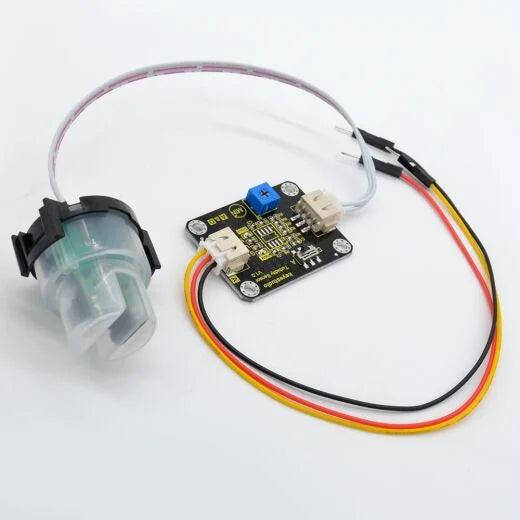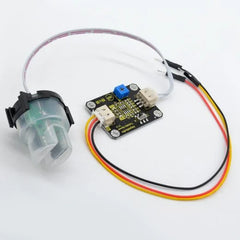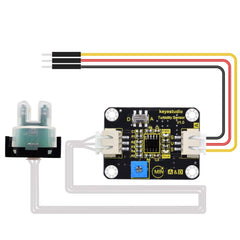


Turbidity Sensor (Water Suspended Particles) .
LE 900.00
Turbidity is a measure for impurity (change water color to be non-transparent) caused by particles suspended or dissolved in water making it appear opaque or cloudy. The suspended particles clouding the water may be due to such substances as clay, rock flour, silt, calcium carbonate, silica, iron, manganese, sulfur, solid contamination, corrosion or industrial wastes.

The turbidity sensor detects water quality by measuring the levels of turbidity, or the opaqueness (non-transparency). It uses light to detect suspended particles in water by measuring the light transmittance and scattering rate, which changes with the amount of total suspended solid particles (TSS) in water. As the TSS increases, the liquid turbidity level increases.
This turbidity sensor has both analog and digital signal output modes. In analog mode, the voltage output cover range from 0 to 4550 NTU (turbidity measuring unit). While in digital mode (selected by sliding switch) the sensor indicate either high or low level of turbidity.
Turbidity sensors are used to measure water quality in rivers and streams, wastewater, pipe transition, agricultural research and laboratory measurements.
Featrures
- Operating Voltage: DC 5V
- Operating Current: 30mA (MAX)
- Operating Temperature: -30℃~80℃
Turidity sensor pin assignment.
Turidity sensor instructables.


